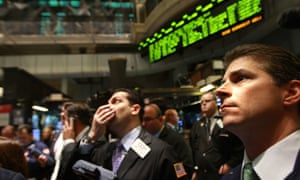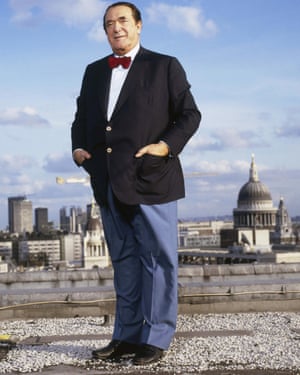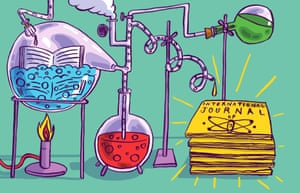Illustration: Dom McKenzie/The Observer
I first came across “nudge” – the concept many consider to be the pinnacle of behavioural economics – at a thinktank seminar a little over 10 years ago. We were all handed a mock wine menu and asked what we’d order.
This was supposed to illustrate that most price-aware diners order the second-cheapest bottle to avoid looking tight and that restaurateurs use this to nudge us towards the bottle with the highest markup. I remember thinking it an interesting insight, but that these sorts of nudges were nowhere near as likely to transform the world as their enthusiastic proponent claimed.
Lots of far more eminent people disagreed with me. Behavioural economics looks at how people make decisions in the real world – warts, irrational biases and all – and applies this to public policy. Its signature policy is set out in the 2008 book Nudge , by Cass Sunstein and Richard Thaler. The central insight is that changing the way choices are presented to people can have a huge impact. Make saving for retirement or donating your organs an opt-out rather than opt-in and watch as people suddenly adopt more socially responsible behaviour. Coming just as the financial crisis hit, Nudge was perfectly timed to achieve maximum traction by offering politicians the chance to reap savings through low-cost policy. Sunstein was quickly appointed to a senior job in the Obama administration, while David Cameron set up the behavioural insights team, dubbed the “nudge unit”, led by psychologist turned policy wonk David Halpern.
The nudge unit has since had a mixed track record: there have been some real successes on pensions and tax payments but in other areas it’s been a bit of a damp squib. So I was surprised when Halpern popped up to talk about the government’s pandemic strategy in the press in early March. It was he who first publicly mentioned the idea of “herd immunity” as part of an effective response to Covid-19 (the government has since denied this was ever the strategy). And it’s clear from the briefing he gave journalists that he favoured delaying a lockdown because of the risk of “behavioural fatigue”, the idea that people will stick with restrictions for only so long, making it better to save social distancing for when more people are infected. “If you go too early and tell people to take a week off work when they are very unlikely to have coronavirus, and then a couple of weeks later they have another cough, it’s likely they’ll say ‘come on already’,” he told one reporter.
Halpern is reportedly on Sage, the government’s scientific advisory committee for emergencies, and he is also the government’s What Works national adviser, responsible for helping it apply evidence to public policy. So one might expect there to be something substantial behind the idea of behavioural fatigue.
But evidence presented to government by the Sage behavioural subcommittee on 4 March, representing the views of a wider group of experts, was non-committal on the behavioural impact of a lockdown, noting that the empirical evidence on behavioural interventions in a pandemic is limited. Shortly after Halpern’s interviews, more than 600 behavioural economists wrote a letter questioning the evidence base for behavioural fatigue.
Rightly so: a rapid evidence review of behavioural science as it relates to pandemics only fleetingly refers to evidence that extending a lockdown might increase non-compliance, but this turns out to be a study about extending deployment in the armed forces. “Behavioural fatigue is a nebulous concept,” the review’s authors later concluded in the Irish Times.
This is a common critique of behavioural economics: some (not all) members of the discipline have a tendency to overclaim and overgeneralise, based on small studies carried out in a very different context, often on university students in academic settings. It’s extraordinary that Halpern was briefing on what essentially looks like his opinion as if it were science. We won’t know how influential it was in the government’s decision to delay lockdown until a post-hoc inquiry, but there’s no reason to suppose Boris Johnson wasn’t listening to his “what works” adviser. “The behavioural psychologists say that if you don’t shake somebody’s hand, that sends an important message… [about] washing your hands,” he said on 9 March.
It’s less extraordinary, though, when you understand that the Behavioural Insights Team is a multimillion-pound profitable company, which pays Halpern, who owns 7.5% of its shares, a bigger salary than the prime minister. Here lies the potential conflict of interest: someone who contributes to Sage also has a significant financial incentive to sell his wares. It perhaps explains BIT’s bombastic claims – “it’s no longer a matter of supposition… we can now say with a high degree of confidence these models give you best policy,” Halpern claimed in 2018. And: “We make much of the simplicity of our interventions… but if properly implemented, they can have a powerful impact on even our biggest societal challenges.” (It is worth noting that Sir Patrick Vallance, the government’s chief scientific adviser, says that one reason the composition of Sage has been kept private is to protect scientists from “lobbying and other forms of unwanted influence which may hinder their ability to give impartial advice”.)
This hubris has led some behavioural scientists to push their approach way beyond those realms such as consumer policy, where it has the potential to be most effective. My jaw dropped on reading a recent 70-page BIT report on applying behavioural insights to domestic abuse that included not one survivor’s voice and in which the word “trauma” appeared only once. It describes domestic abuse as a “phenomenon made up of multiple behaviours undertaken by different actors at different points in time”. Its recommendations are that strange mix of common sense dressed up as behavioural revelation and jarring suggestions that tend to characterise behavioural science when it overreaches itself.
Little wonder that a House of Lords committee was highly critical of government tendencies to emphasise nudges at the expense of other effective policy solutions in 2011. Nudges undoubtedly have their place, but they’re not going to eradicate domestic violence or end catastrophic climate change.
The problem with all forms of expertise in public policy is that it is often the most formidable salespeople who claim greater certainty than the evidence allows who are invited to jet around the world advising governments. But the irony for behavioural scientists is that this is a product of them trading off, and falling prey to, the very biases they have made their names calling out.
I can only imagine how easy it might have been for Johnson to succumb to confirmation bias in looking for reasons to delay a lockdown: what prime minister wants to shut down the economy? And it is the optimism bias of the behavioural tsars that has led them to place too much stock in their own judgement in a world of limited evidence. But this isn’t some experiment in a university psychology department - it is a pandemic and lives are at stake.
I first came across “nudge” – the concept many consider to be the pinnacle of behavioural economics – at a thinktank seminar a little over 10 years ago. We were all handed a mock wine menu and asked what we’d order.
This was supposed to illustrate that most price-aware diners order the second-cheapest bottle to avoid looking tight and that restaurateurs use this to nudge us towards the bottle with the highest markup. I remember thinking it an interesting insight, but that these sorts of nudges were nowhere near as likely to transform the world as their enthusiastic proponent claimed.
Lots of far more eminent people disagreed with me. Behavioural economics looks at how people make decisions in the real world – warts, irrational biases and all – and applies this to public policy. Its signature policy is set out in the 2008 book Nudge , by Cass Sunstein and Richard Thaler. The central insight is that changing the way choices are presented to people can have a huge impact. Make saving for retirement or donating your organs an opt-out rather than opt-in and watch as people suddenly adopt more socially responsible behaviour. Coming just as the financial crisis hit, Nudge was perfectly timed to achieve maximum traction by offering politicians the chance to reap savings through low-cost policy. Sunstein was quickly appointed to a senior job in the Obama administration, while David Cameron set up the behavioural insights team, dubbed the “nudge unit”, led by psychologist turned policy wonk David Halpern.
The nudge unit has since had a mixed track record: there have been some real successes on pensions and tax payments but in other areas it’s been a bit of a damp squib. So I was surprised when Halpern popped up to talk about the government’s pandemic strategy in the press in early March. It was he who first publicly mentioned the idea of “herd immunity” as part of an effective response to Covid-19 (the government has since denied this was ever the strategy). And it’s clear from the briefing he gave journalists that he favoured delaying a lockdown because of the risk of “behavioural fatigue”, the idea that people will stick with restrictions for only so long, making it better to save social distancing for when more people are infected. “If you go too early and tell people to take a week off work when they are very unlikely to have coronavirus, and then a couple of weeks later they have another cough, it’s likely they’ll say ‘come on already’,” he told one reporter.
Halpern is reportedly on Sage, the government’s scientific advisory committee for emergencies, and he is also the government’s What Works national adviser, responsible for helping it apply evidence to public policy. So one might expect there to be something substantial behind the idea of behavioural fatigue.
But evidence presented to government by the Sage behavioural subcommittee on 4 March, representing the views of a wider group of experts, was non-committal on the behavioural impact of a lockdown, noting that the empirical evidence on behavioural interventions in a pandemic is limited. Shortly after Halpern’s interviews, more than 600 behavioural economists wrote a letter questioning the evidence base for behavioural fatigue.
Rightly so: a rapid evidence review of behavioural science as it relates to pandemics only fleetingly refers to evidence that extending a lockdown might increase non-compliance, but this turns out to be a study about extending deployment in the armed forces. “Behavioural fatigue is a nebulous concept,” the review’s authors later concluded in the Irish Times.
This is a common critique of behavioural economics: some (not all) members of the discipline have a tendency to overclaim and overgeneralise, based on small studies carried out in a very different context, often on university students in academic settings. It’s extraordinary that Halpern was briefing on what essentially looks like his opinion as if it were science. We won’t know how influential it was in the government’s decision to delay lockdown until a post-hoc inquiry, but there’s no reason to suppose Boris Johnson wasn’t listening to his “what works” adviser. “The behavioural psychologists say that if you don’t shake somebody’s hand, that sends an important message… [about] washing your hands,” he said on 9 March.
It’s less extraordinary, though, when you understand that the Behavioural Insights Team is a multimillion-pound profitable company, which pays Halpern, who owns 7.5% of its shares, a bigger salary than the prime minister. Here lies the potential conflict of interest: someone who contributes to Sage also has a significant financial incentive to sell his wares. It perhaps explains BIT’s bombastic claims – “it’s no longer a matter of supposition… we can now say with a high degree of confidence these models give you best policy,” Halpern claimed in 2018. And: “We make much of the simplicity of our interventions… but if properly implemented, they can have a powerful impact on even our biggest societal challenges.” (It is worth noting that Sir Patrick Vallance, the government’s chief scientific adviser, says that one reason the composition of Sage has been kept private is to protect scientists from “lobbying and other forms of unwanted influence which may hinder their ability to give impartial advice”.)
This hubris has led some behavioural scientists to push their approach way beyond those realms such as consumer policy, where it has the potential to be most effective. My jaw dropped on reading a recent 70-page BIT report on applying behavioural insights to domestic abuse that included not one survivor’s voice and in which the word “trauma” appeared only once. It describes domestic abuse as a “phenomenon made up of multiple behaviours undertaken by different actors at different points in time”. Its recommendations are that strange mix of common sense dressed up as behavioural revelation and jarring suggestions that tend to characterise behavioural science when it overreaches itself.
Little wonder that a House of Lords committee was highly critical of government tendencies to emphasise nudges at the expense of other effective policy solutions in 2011. Nudges undoubtedly have their place, but they’re not going to eradicate domestic violence or end catastrophic climate change.
The problem with all forms of expertise in public policy is that it is often the most formidable salespeople who claim greater certainty than the evidence allows who are invited to jet around the world advising governments. But the irony for behavioural scientists is that this is a product of them trading off, and falling prey to, the very biases they have made their names calling out.
I can only imagine how easy it might have been for Johnson to succumb to confirmation bias in looking for reasons to delay a lockdown: what prime minister wants to shut down the economy? And it is the optimism bias of the behavioural tsars that has led them to place too much stock in their own judgement in a world of limited evidence. But this isn’t some experiment in a university psychology department - it is a pandemic and lives are at stake.








